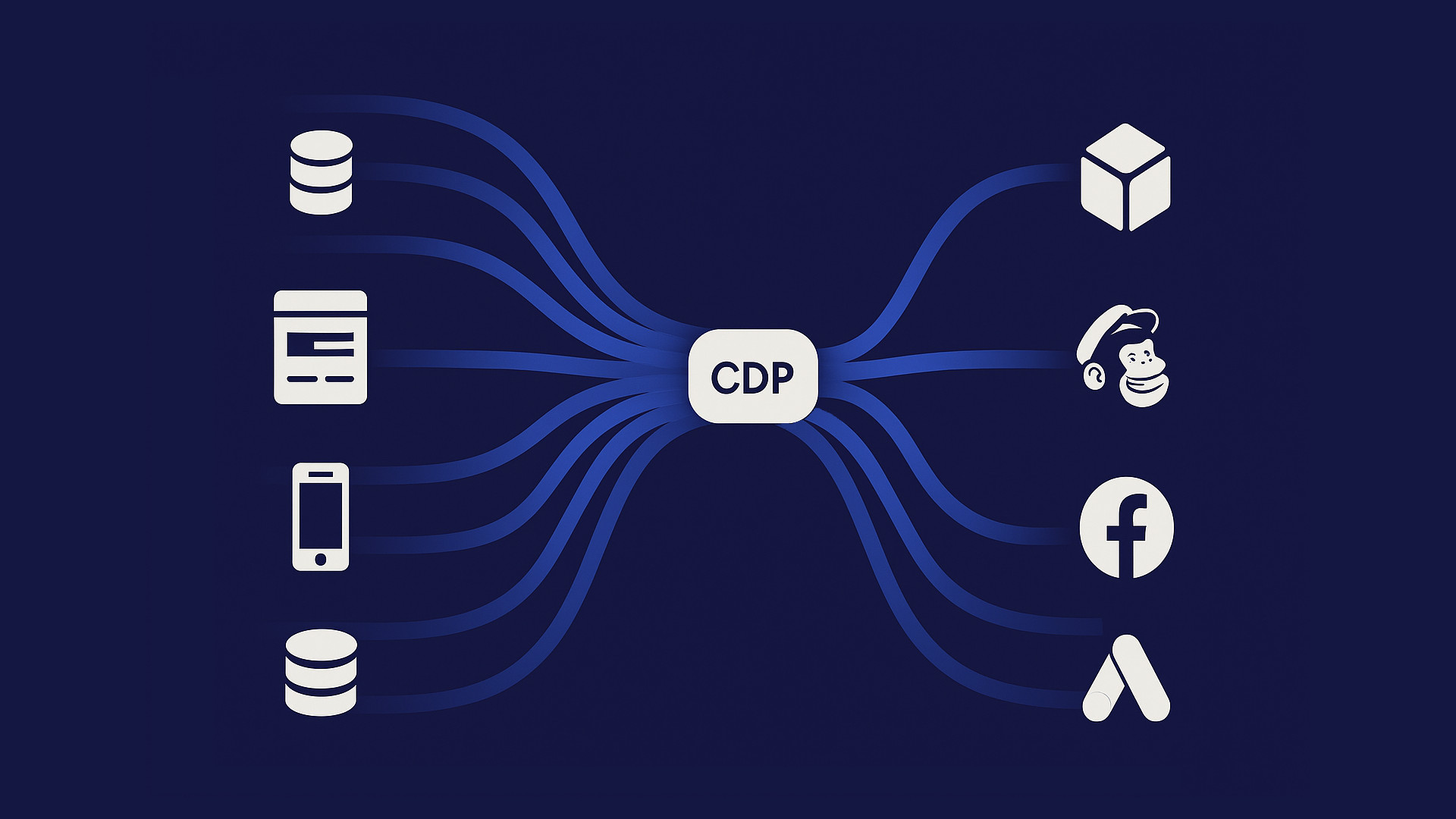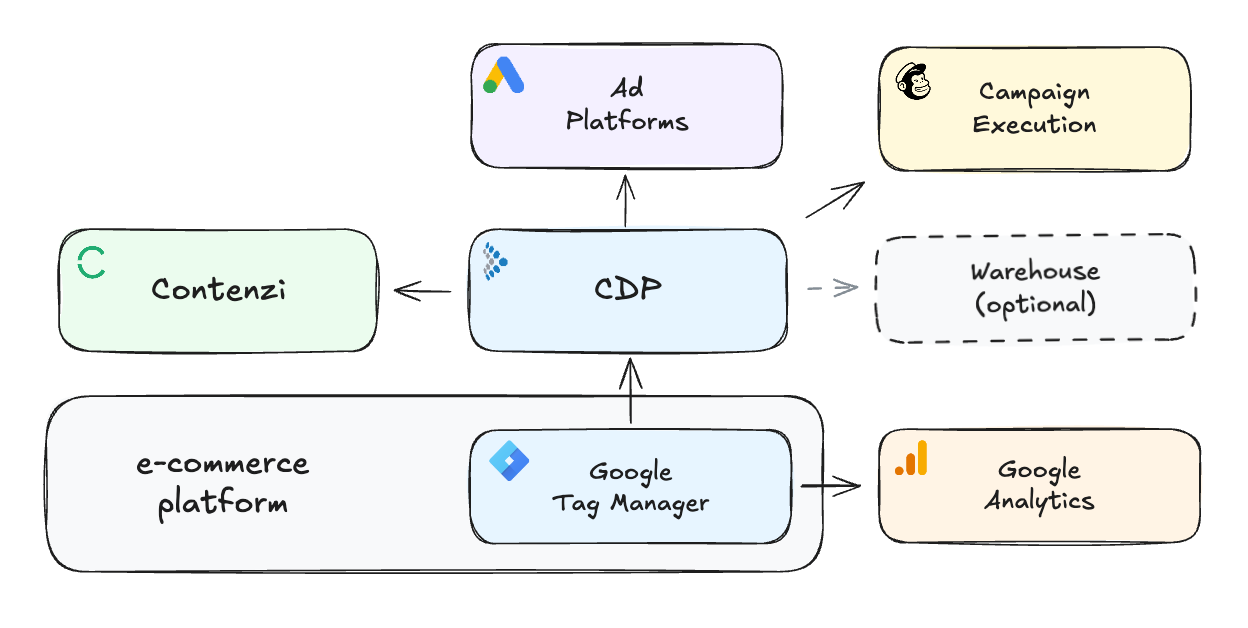Marketing Stacks Part 4: The CDP-Driven Stack

This is the final article in our Modern Marketing Stacks series, where we explore how ecommerce teams structure their marketing tools as they scale.
The series:
- Part 1: The Starter Stack - Google Analytics, Google Tag Manager, Shopify or Magento
- Part 2: The Cross-Channel Engagement Stack - Shopify or Magento plus tools like Mailchimp and Customer.io, used to orchestrate multi-touch journeys across email, SMS and the website
- Part 3: The Warehouse-Driven Stack - Centred around BigQuery or Snowflake as the data source of truth, using solutions like Rudderstack or Hightouch to distribute data to marketing channels
- Part 4: The CDP-Driven Stack - Led by a CDP such as Segment or Tealium, acting as the central source of truth and enabling real-time activation across channels
Each article explores a different type of martech stack, starting from the simplest foundation and moving toward more advanced data and activation capabilities.
The CDP-driven stack
Some ecommerce teams prefer to move fast with packaged infrastructure. CDPs, or Customer Data Platforms, offer a ready-made solution for collecting data, unifying identities, and activating audiences across multiple channels.
Rather than building and modeling your own data in a warehouse, the CDP handles that complexity for you. That makes it easier for teams without dedicated data engineering to run advanced personalisation, manage real time segments, and coordinate cross-channel experiences.
What’s in the stack?
- A CDP such as Segment, Tealium, or mParticle
- Real time data ingestion and identity resolution
- Built-in connectors for email, ad platforms, analytics tools, and Contenzi

What can you do with it?
- Track events from across your stack and unify them into one customer profile
- Create real time audiences and sync them to your key marketing tools
- Trigger personalisation and messaging workflows with minimal setup
- Power advanced use cases like journey scoring, frequency control, and audience suppression
A simple example: One profile, many actions
A visitor browses a product on mobile without buying. The CDP ties that session to an email subscriber profile. When they return on desktop, they see a homepage tailored to that category by Contenzi. They also receive a follow-up email with a timely promotion.
The same profile powers web personalisation, email messaging, and ad targeting, without needing to rebuild logic in each tool.
Why it works
For many teams, a CDP is the most efficient way to operationalise data. It reduces dependence on engineers and gives marketers a central interface for managing audiences and triggers. Identity resolution and event enrichment happen in the background, so you can focus on delivering better experiences.
This stack works well when your team wants to personalise fast and scale reliably, without building and maintaining a warehouse setup.
How it works
The CDP collects data from your website, app, and tools using SDKs or server-side integrations. It resolves identities using built-in logic, connects events to unified customer profiles, and makes those profiles available in real time.
Using out-of-the-box connectors, you can send those profiles and audiences to tools like Contenzi, Google Ads, or Mailchimp. You can also trigger actions based on behaviours, such as showing a specific homepage experience after someone abandons a cart.
With Contenzi, that means you can personalise experiences for every visit based on live audience membership, without needing to build or manage your own identity graph.
When it fits best
The CDP-Driven Stack is well suited to marketing teams at mid-size and enterprise brands who want data activation without spending time on the data infrastructure underneath. It offers speed, scale, and simplicity for teams who want to focus on outcomes rather than architecture.
For brands that already have a strong data team and central warehouse, a composable approach may offer more control. But for many others, the CDP-Driven Stack is the fastest way to unify data and turn it into action.
Want to talk it through?
We hope this series helped you find a stack that fits your stage, your team, and your ambition.
If you’d like to take a fresh look at your current stack, explore what’s possible with the tools you already have, or get friendly advice from our team, just reach out. You can message us via the chat on this page or send us a quick note through our contact form. We’d love to hear what you’re working on.
Like this post?
We write about personalisation, composable architectures, and how to put your data to work in our newsletter.
